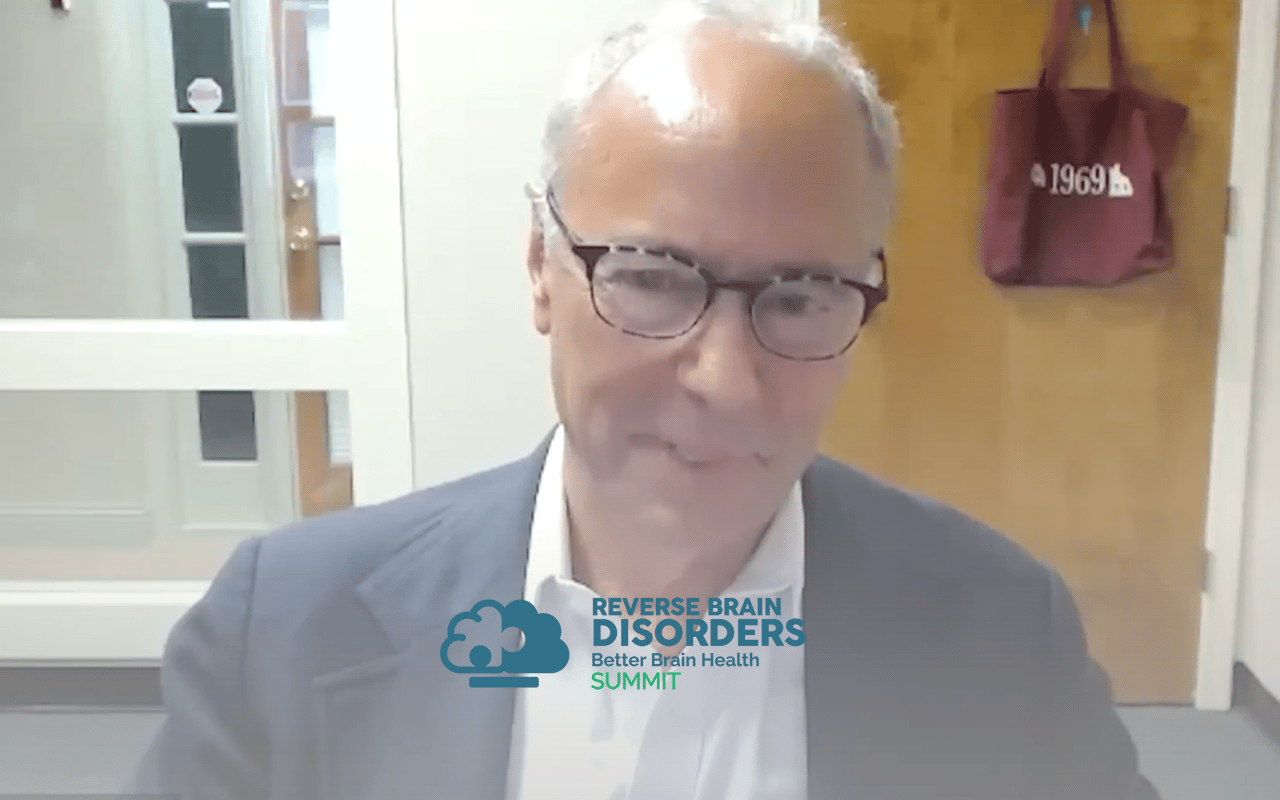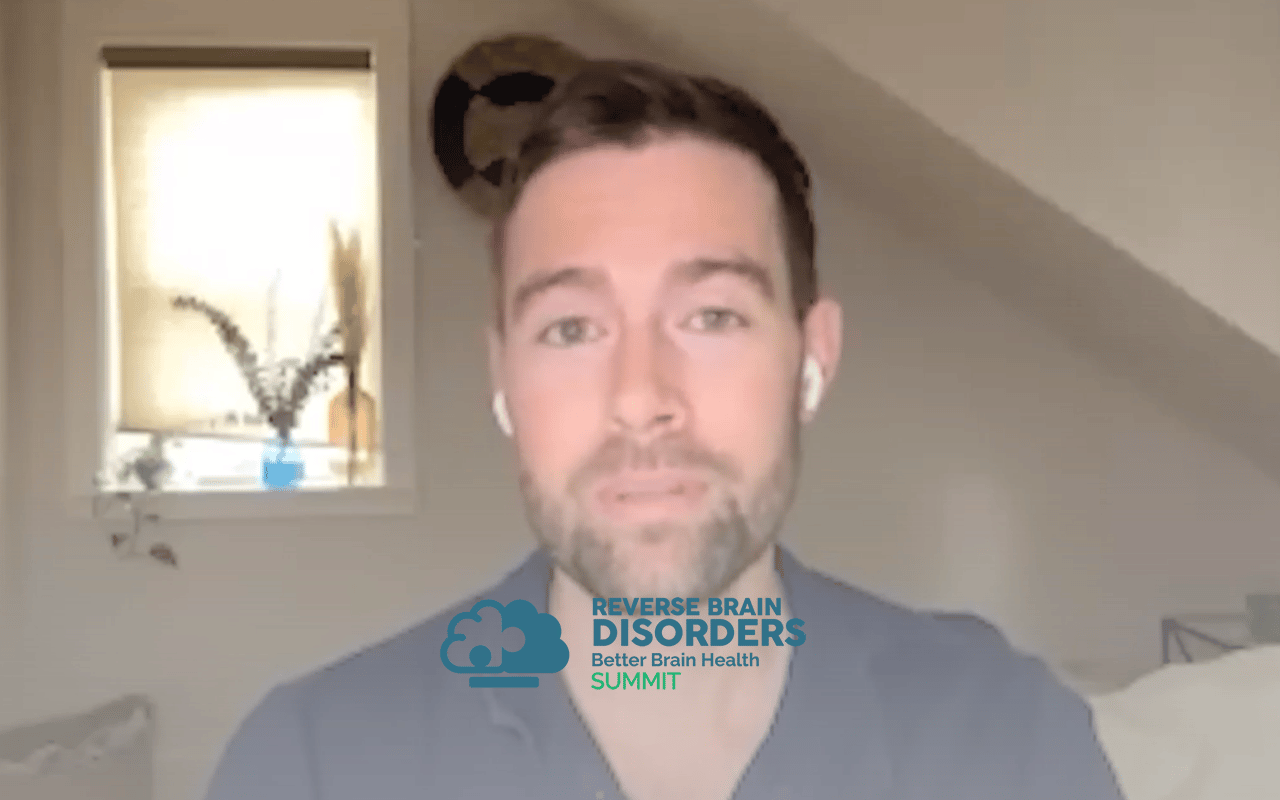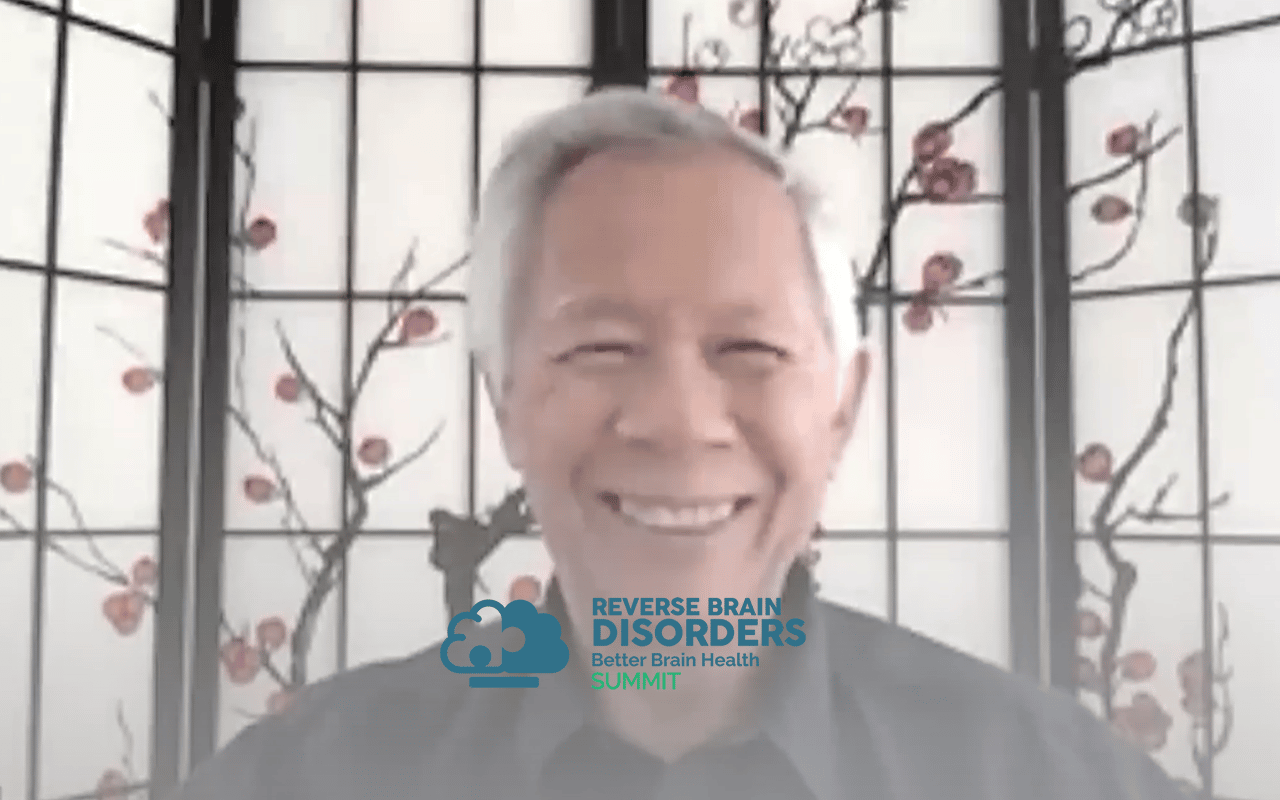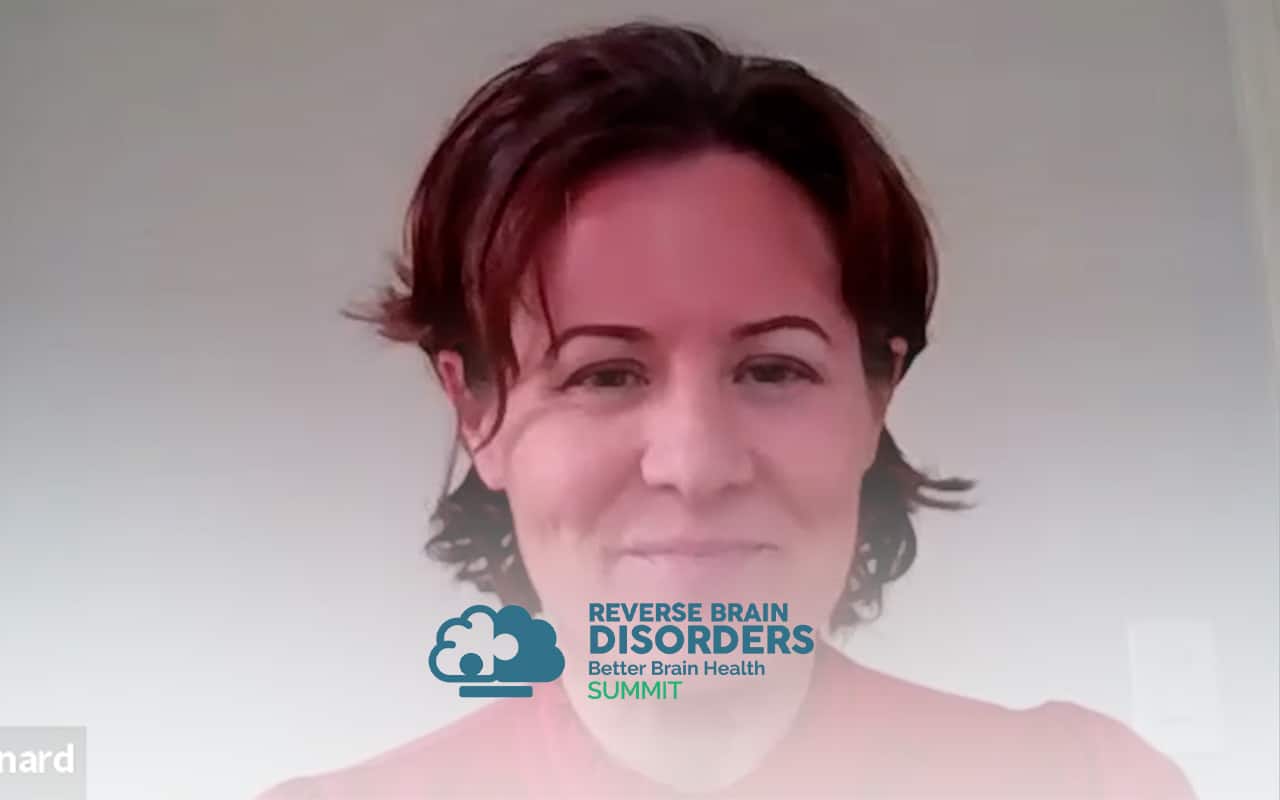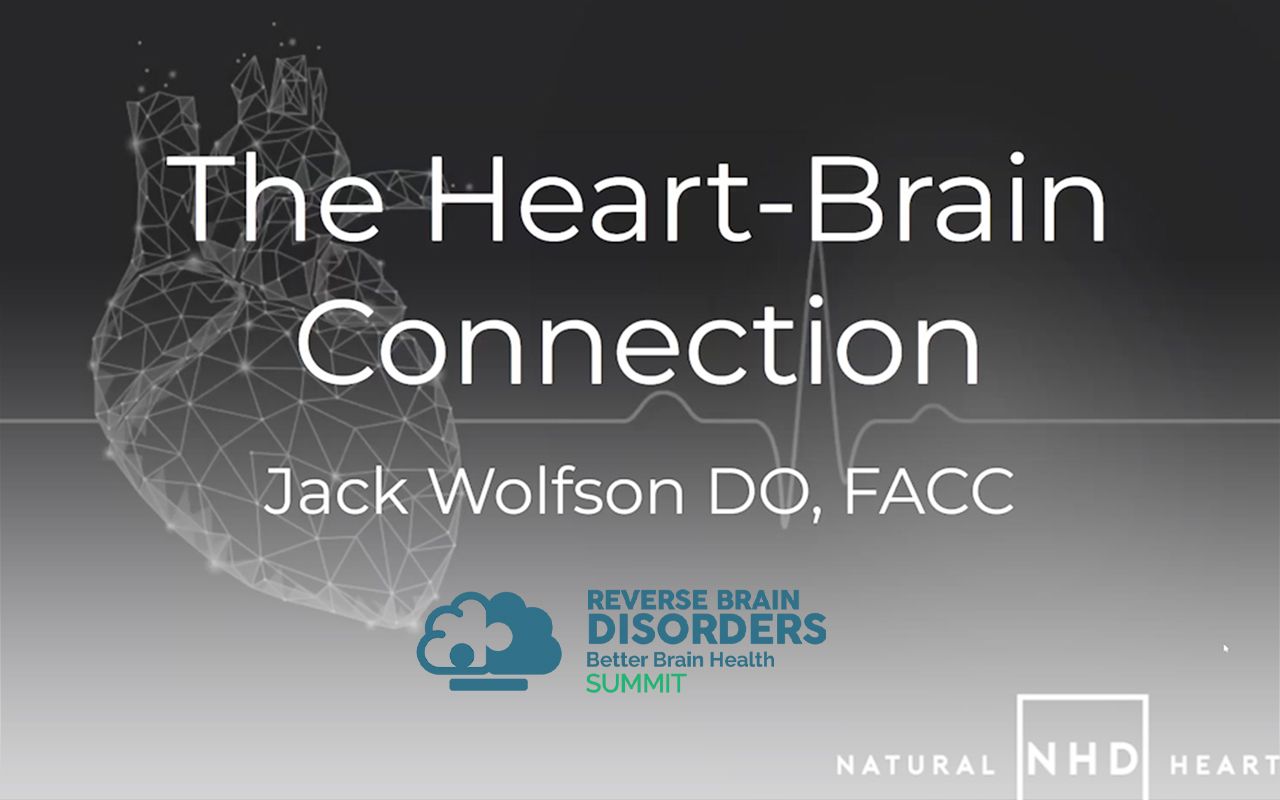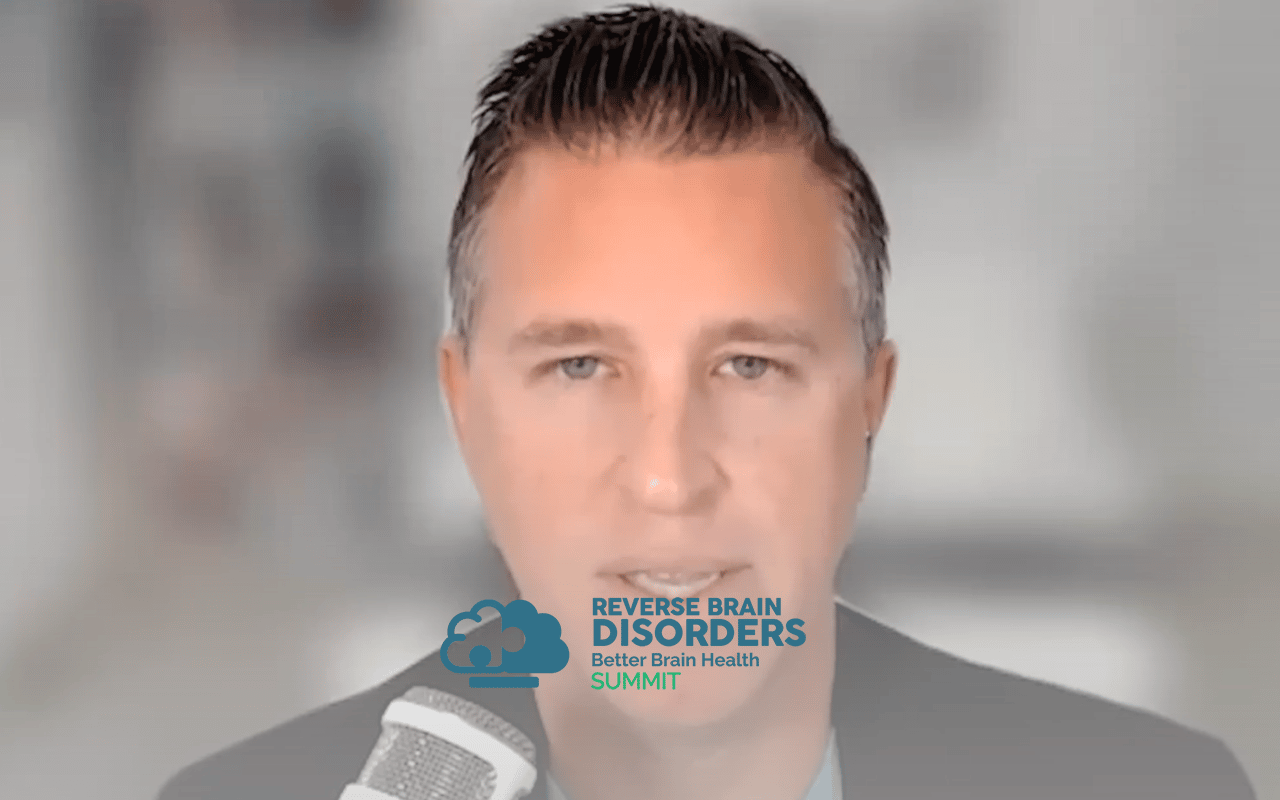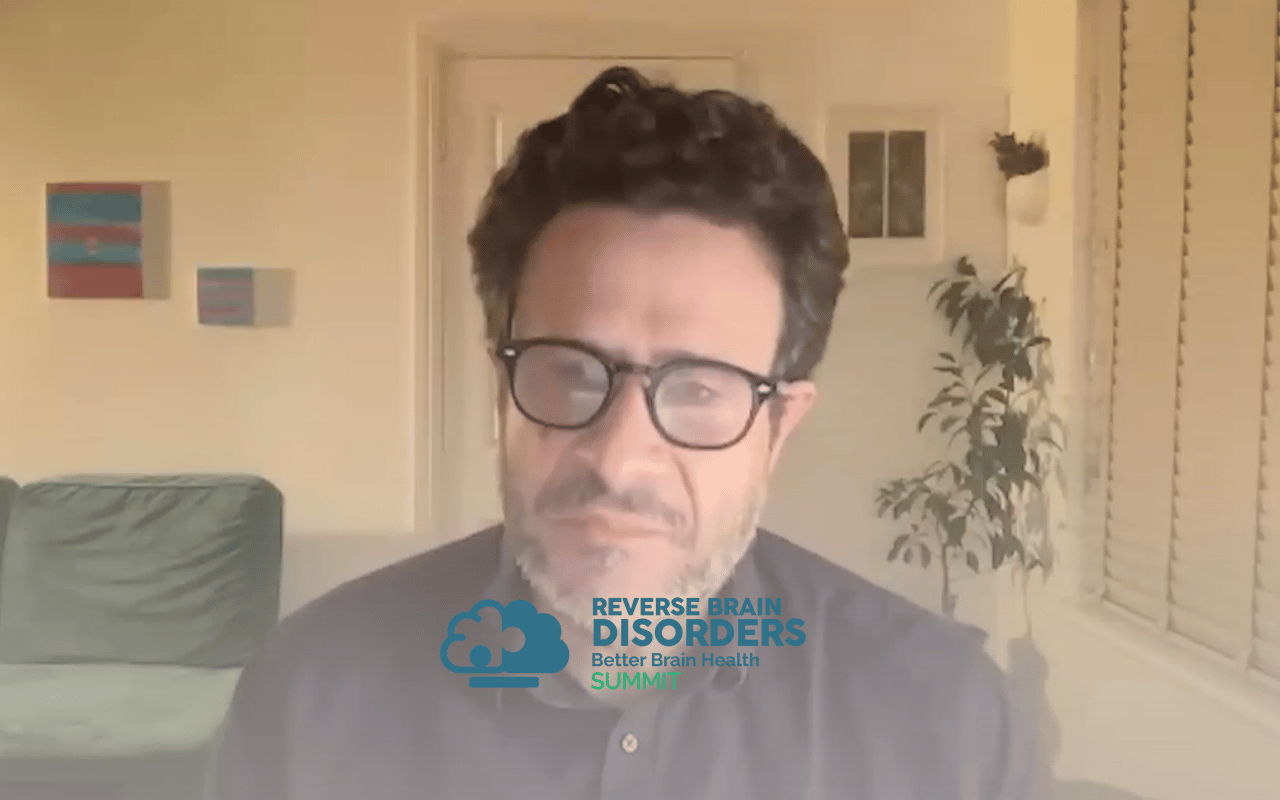Join the discussion below

Dr. Ruan is the Founder and CEO of Texas Center for Lifestyle Medicine. He devotes his career in practicing and building systems that allow for efficient delivery of healthcare. He is a board certified internal medicine physician but also have advised with companies to improve their workflow, company culture, marketing,... Read More

Professor Wexler graduated from Harvard College Magna Cum Laude with a major in Government and earned his MD at Albert Einstein of Medicine where he did research on neurotransmitter synthesis in cell cultures, studied for two years with Oliver Sacks, and studied psychiatry at Anna Freud’s clinic in Hampstead and... Read More
- How Technology Outperforms Medicine in Brain Disorders
- Using digital platforms to address brain and mental health should be the standard of care
- Why using technology is better than medicine for brain and mental health
Cheng Ruan, MD
So for this segment, we’re going to dive into a world called Digital neuro Therapy and technology is going to take us where medicine has killed us over and over again in the world of psychiatry and neuropsychiatry. So today we have a very fabulous guests. I’m really proud to introduce Dr. Wexler. And what’s great about Dr. Wexler is that he is one of the people that are pioneers in redefining the link between, um, emotional and psychiatry based sciences to the actual brain. So Dr. Wexler graduated from Harvard College with magna cum laude and with the major in government and earned his M d. Albert Einstein School of Medicine, where he did his research on neurotransmitters, Um, and then subsequently studied psychiatry. Anna Freud’s clinic in Hampstead in Neurology at the Institute of Neurology Queen Square. He trained in psychiatry at Yale University and state as a member of the faculty and really argued for the importance of neural systems view of really normal and abnormal brain functions, and which led to a paper that was published in 1986 in the British Journal of Psychiatry.
Um, advocating the use of multiple physiologic and cognitive measures to move past rather than hope to confirm psychiatry’s 100 year old diagnostic system, which really helped launch the field of digital neuro therapy even back then. And so this really lets you from the 19 eighties to now a huge amount of technology driven imaging as well as cognitive assessment tools such as functional MRI as well as other tools as well quantity, e g et cetera, et cetera. And he device developed. He helped develop this programme called C eight Sciences Programme, and it’s at sea a sciences dot com, and this programme is really the goal of it is to put it into everyone’s homes and schools as a digital narrow therapy tools. So basically games and things that the kids can play to allow the brains to process things in a more optimal way other than just kind of relying on medications. And so Professor Wexler in 2006, published in Bringing Culture, neurobiology, Ideology and Social Change, a seminal text and cultural neuroscience, and we’re really here to discover what his concept is and where psychiatry is going to go in the new future and where it has landed right now and the tools that you can utilize right now. So I’m super proud to introduce Professor Wexler to the stage. So, Professor, welcome to the show. Appreciate you having on
Bruce Wexler, MD
my pleasure to be here.
Cheng Ruan, MD
Yeah, awesome. So we’re going to dive right into this thing called Digital Neuro Therapy. And I think it’s new for a lot of people listening to this. So we have Mom’s listening to this. You know, we have husbands listening to this. We have Children listening to this. We have geriatric adults listening to this suffering from memory problems, and why not? So we have a huge, huge range of audiences that are listening to this right now. So let’s have you define what is digital nerve therapy and how is it different?
Bruce Wexler, MD
OK, that’s a great question, because people here digital health, digital interventions, they tend to mix them all together and not appreciate that there’s a fundamentally different types of digital interventions. And then within one type, of course, they’re not all the same. Just like, uh, anti depressant. Pills aren’t the same, so we’ll talk about all those things, and I appreciate the opportunity to do that. Let me start with putting my comments in the context of contemporary understanding of how the brain is organized. It works because it’s a brain we’re trying to address. It’s the brain we’re trying to help, and we have to understand, just like if your car is broken, people stop. Everybody knows the first thing to do right? Go OutFront got out of your car. Open the hood, look under the engines. And then there’s that moment of truth. If you don’t know how the thing works, it’s very hard to figure out what’s wrong with it.
Fix it. And that’s the problem we’ve had with the brain and treating psychiatric and other neurologic disorders because we haven’t understood enough about the way the brain works. So we have made progress, and the progress is this again for compare person to what we used to think. In the 19th century, people thought that specific parts of the brain were dedicated to a specific cognitive function. Moral function, personal quality. There was a little area for greed, another one for generosity, another one for compassion, another one for mathematics, another one for written language, and it didn’t occur to them to wonder how this happened, you know, how did these brain areas get so specialist for these functions that were created by human beings afterwards? And that’s not the way the brain works. It’s not the way evolution developed our brains, and that was called phrenology. And it’s also carried forward in what we call localisation is thinking about how the brain is organized, that a particular area does particular function, and part of the appeal for that is it’s simpler and we can understand it that way. I think we understand it. Imagine it that way, but it’s not true. So the way the brain really works is through distributed functional systems. So let me build that up for you. Brain consists of neurons. We know that 86 billion of them each one connected to 1000 other ones, each one receiving hundreds of inputs in the thousands of a second. That’s how complicated it is. So you have The brain is organized, we say hierarchically, so the first level is a neuron, one neuron. The next one is two neurons together and make a synapse, the next one our neighboring cells together that form a little local micro circuit.
We caught, and then the next level up integrates these microcircuits from all over the brain into functional neurosis. Tums. Now, why is that understanding so critical? It’s because cognition that you want to preserve if you’re compromising your brain function through sleep problems, you have mild cognitive impairment. You have cognitive problems for other reasons you have. So cognition and emotion don’t exist in Single neurons don’t exist at the level of two neurons together that don’t exist in the level of the microcircuits. They only exist in these neural systems that integrate function and neurons hundreds of millions from all over the brain to do the simplest operation. So these so these neural circuit systems dynamically reorganize themselves constantly to make prepare the brain to do the next function. We might think of that as getting ready to it. Get in the right mindset, getting the right task set. You know you think differently when you’re approaching a certain type of problem.
That means your neuro systems are getting reorganized. And so what we have is that areas. So as a person, we don’t care if we have an extra copy of a gene and one of our neurons unless it disrupts the neuro system. So the basis of our thinking and feeling. We don’t care if there are a few extra plaques floating around in the brain unless it disrupts the neuro systems that are responsible for who we are. And so disease exists at the neuro systems level. So that’s the 1st 10.2 points we can say right. The brain is hierarchically organized. It doesn’t. It’s up when you get to the neuro systems that integrate actions of neurons all over the brain that we first are able to even have emotion and cognition. And it’s disruption of that level that constitutes disease, because that’s what diseases, problems thinking, problem stealing and things like that. So now let’s think about what the therapy approaches have been well, so you could have disease processes at any one of these levels. You could have a problem in your neurons. You could have a problem in your synapses. You could have a problem in your microcircuits, or you could have a problem in your distributed neuro systems. Drugs, target neurons and synapses. That’s it, and they can address pathology down there. But many times that’s insufficient to restore the neuro system function. So people probably may have read because it made headlines that Biogen, one of the very big pharma company, billions of dollars developing a new medication for all so that would address pathology at these lower levels of we’re on. And it had no effect on people’s behavior and thinking the CEO was fired because they were trying to sell. There’s a $50,000 a year drug when it didn’t change people’s feelings at all because it only focused at to lower level. So bring into the picture now to answer the question. What is digital neuro therapy? It is the first treatment that focuses on restoring neuro system dysfunction
Cheng Ruan, MD
rather than just like single neuron or synapse, right? Like drugs. Yeah, and so how do we do that?
Bruce Wexler, MD
How do we correct connectivity problems which have been identified in many disorders connectivity, problems, lack of synchrony, lack of integration of these different areas. But we correct an imbalance in a system where some parts are supposed to be regulating other parts. This is what happens in depression. Frontal cognitive areas is supposed to be regulating posterior regions that generate negative affect. Depression gets turned around, the frontal areas are compromised, the negative emotion escapes regulation, further compromises the cognition, and people go into a downward spiral. That’s an accepted model of what depression is. It’s not my model, but I endorse it. It’s neuro system models, so how can you repair that? So moving now to another key point is, where do these neuro systems come from that are responsible for our thinking? Are they determined by our genes? No, they’re not.
The Nobel Prize was given for work done in the 19 fifties by Hugo and Whistle showing that in all mammals the neuro systems are shaped after birth by stimulation from the environment. And we call that neural plasticity. Environment harnesses brain’s neuro plasticity after birth to create these neuro systems. And it’s what distinguishes the human brain from every other animal is the extent to which the neuro systems are shaped after birth. So that’s a clue. So listeners you may want to think Now I’ve just said to you, see what you can have, what you might think about if you’re trying to design a new treatment, given that this is the way the brain is organized disorders in the neuro systems level. We know neurosis. Tums are shaped after birth by stimulation from the environment. Where does that stimulation come in from eyes, ears and touch. So how could that have some therapeutic implications? What People pause for a moment and puzzled over marriage?
Cheng Ruan, MD
You know, the first thing that I think about when you stay this, is that our experiences determine our emotions in these sort of neural systems. And right now I feel like there’s a divorce between psychiatry and neurology. But they’re really all in one,
Bruce Wexler, MD
and we’ll get to that point later. Absolutely fundamental point.
Cheng Ruan, MD
Yeah, what kind of I think, right. And I think there’s a stigma here in psychiatry is a lot of people don’t want themselves to be, you know, quote unquote stigmatized for having a psychiatric disorder. So you don’t know how many. Sometimes people come to my office and say, Hey, is it just me or just stress? Or is it my body? I’m like, What’s different, you know? And the fact that are these experiences and these stressors, whether the psychological emotional, you know, sensory things that really occur, has been happening since we were born should really take away that stigma from psychiatric disorders. Don’t you agree? Oh, yeah, I do agree.
Bruce Wexler, MD
Definitely. And because you don’t have control over that when you’re a little kid about your issues are coming in. So it’s your misfortune if it shapes you or if you come from poverty and you don’t get the type of stimulation to promote these neuro system development, then you have these achievement gaps, uh, related to poverty. Because neuro system is important for learning, didn’t develop exposure to trauma compromises the development of these neuro systems, uh, and stress through cortisol mechanisms. So all of that is certainly true. But let me now go back to my question about the therapeutics. How could we could we now restore neuro system function? We’re here. The neuro systems are shaped by stimulation coming in, say, through the eyes and ears into the brain that harnesses neuro plastic processes that we evolved to have our brains evolved to be responsive to this input. Our brains have amazing ability, amazing ability in the whole universe to shape themselves to the nature of the stimulate coming in, reorganize their physical matter, their actual brain structure based on the stimulation coming in through the eyes and ears. And this is real physical stimulation because, consider, if you go around the corner and you’re trying to decide if it’s a bear or a small delivery truck coming at you, what do you have to go on? It’s only light waves that come in your eyes that are reflected off the truck or the bear. That’s all you’ve got to go on, You may say. I’m thinking about that. You know what I remember when they look at it this way? But all that’s coming into you is physical lightwave patterns. Those activate, uh, physical electronic processes in the eyes and brain. And if it’s a bear that comes, it stimulates different neural systems like Let’s get out of here fast. It’s an ice cream truck that comes. It’s stimulating. Different neural systems like Yum Yum! Let’s walk up to that truck. And so what we do with digital nerve therapy, as we have very precise control over the nature of the stimulus we’re putting into the eyes and ears and then very precise, much more subtle control than whether it’s a bear or delivery truck.
It could be in a memory task. Are we putting in words we’re putting in shapes? Maybe you have trouble with shapes, remembering more shapes. Maybe I have trouble remembering more words. That’s a difference in the way our neuro systems are organized and functioning, and we can discover that with digital means. And then we can target that to improve it. So we know we have control of the nature of the stimulus we’re putting in. And then the processing demands, like, Are you supposed to remember this? Is that all it is remembering a list of things, or you’re supposed to figure out a pattern in what we’re showing you. That’s a different euro system. And what if we show you one problem when you’re doing a pattern and then the next problem you have to do with just a memory and the next one is categories? That’s cognitive flexibility. We’re making those neuro systems just like you’re out there doing training for the soccer field and you’re having to do did types of steps on an agility ladder, moving back and forth different ways.
We can drive those neuro systems to reconfigure we can tell when they’ve got a problem when one person has a different problem than another person so so important as you know in psychiatry, because our diagnostic systems are so weak that we have to be able to individualize treatment, and that’s what neuroscience can do. So just to finish this first question, what is digital neuro therapy? What it is is it’s the first treatment that targets neuro system dysfunction. It uses the eyes and ears to direct specific, highly controlled stimulate and task requirements to activate targeted, dysfunctional euro systems so we can produce activity dependent. You’re a plastic enhancement just the way the systems were created. And so one last statement, You know that you suggest next questions or topics that we might want to transition to you. You talked about the confusion people and psychiatrists at between mind and brain and went to think about it. The psychological when you think about it physical, our whole research operations, funded at the highest levels, have that problem. They say we have an NIH brain initiative. It says We want to understand the aspects of brain function that make us human. We understand that their systems and its hierarchy. You know what they fund They fund looking at microcircuits deeper and deeper in the brain. They have nothing on euro system level. They don’t. They don’t even use cognitive assessments as measures of brain function. Cognitive assessment. What are they measuring other than brain function? So we’ll get back to that because they want to intervene in the brain. You know what they do? They put electrodes on your skull, hook it up to a battery you can get from Radio Shack, send electricity through the skull to impact your brain. And I’m saying like, Hello? What about the eyes and ears that were evolved just for this purpose over millions of years to shape our neuro systems? Guys, these are just just as physical, just as much. A brain intervention is what you’re doing by putting electricity in, but much more controlled. So that’s what digital neuro therapy is, and it works. And we’ve, uh, we’ve demonstrated that, as have others. So
Cheng Ruan, MD
Well, that’s great, because, um, just to summarize, um, digital neuro therapy is something. It’s very it’s a simple concept, um, but very complex topic, right? And the simple concept is used sensory that developed your neuro systems in the first place when you were born, or maybe in utero, and then do that now, no matter how old you are and
Bruce Wexler, MD
because there are plastic exists. So yes, let’s use those things to hear it as simple as that. But thousands of research careers and billions of dollars are being wasted, wasted. You know this. You know how much it costs of pharma companies develop a new drug and they’re pre pre clinical studies, you know, before they get to testament humans over $500 million per drug for C. N s. You know how many fail 93%. There was something wrong, and they don’t understand what they’re doing wrong, you know? And it’s conceptual because they don’t appreciate the importance of the neuro systems levels.
Cheng Ruan, MD
Well, I think I think, you know, form for pharmaceutical research standpoint, and what they’re really trying to determine is maybe at the micro neuronal level at the central level, there’s some drug to target that specific process that hopefully when you pull the lever has a big effect, and that doesn’t necessarily happen, especially in the world of hardly ever happens, but it very clearly. And I tell people, uh, it’s like a foundation of a house, right? You have these. You have these neural systems that were establishes the foundation before you were three years old, and then throughout life experiences build upon that foundation. And you’re really What you really want to do is as you get older, you want to upgrade some systems. Well, it’s like you can’t just replace one pipe of the plumbing and expect the whole thing to get better and do what they’re gonna do, right? Yeah.
Bruce Wexler, MD
That’s the problem they run into with rehabbing houses, right? Yeah. So, uh, at home, I’m afraid to tell you the homeowner, it’s a more systemic problem, right?
Cheng Ruan, MD
Yeah, exactly. So let’s compare the digital neuro therapies. Um, versus medications. Has there been studies that demonstrate how it works? Um, and is it applications are not Yeah. Farcical therapies.
Bruce Wexler, MD
Yeah. So I’ll give you some dramatic examples from our own work. Uh, let me just disclosure, you know, it’s my own work. I can know best. And then we got a short time, and I can tell you the details and feel confident and of course, I’ve reviewed a lot of the other work, and people are welcome to read it, uh, directly or in some of the articles. But so I first started doing this with people with schizophrenia. Actually, First Paper published in 1997 and we were able to show that we could normalize there. We used fMRI to just prove what we were doing, that we could normalize task related brain activation So people with schizophrenia have a problem with verbal memory. It’s been well established. So I first did a study and published in Archives of General Psychiatry, showing a group of people with schizophrenia. A group of healthy people give them a task of verbal memory tasks to do while you’re looking at their brain. And there’s certain key areas that don’t get activated that are part of the system and the people with schizophrenia that are robustly activated healthy people. So we did a digital made a really crude digital neuro therapy in my lap. 16 weeks of this we had normalized task related brain activation and people with schizophrenia. For many years now, they were receiving medication, so medication we know in skipper schizophrenia can be helpful for symptom reduction. Unfortunately, it doesn’t improve cognition much. So we were showing patients who were on medication already had this problem of not activating their brain appropriately in the nervous system’s way, for a very important task. Verbal memory, we shall we can normalise it. Then we showed that we could improve a whole bunch of what we call executive cognitive functions. These are our cognitive flexibility, memory attention, a variety of thinking abilities that are essential for learning and success in life so we could improve those. Then we did a study, and Morris Bell and I are. We did too large, and I m h funded randomized controlled trials where we put together a digital neuro therapy. At that time, we were calling a cognitive remediation therapy. But I’ve renamed it together with work therapy to help patients with schizophrenia get employment. We showed and we gave these were long term interventions. So one of them we gave training for a whole year. We followed people for another year. The group that got our training, plus our cognitive training plus the work therapy, work more hours and earn more money in the real world. Compared to people who only got to work therapy. So the whole part of what I told you we demonstrated we could restore brain system function.
It translated into cognitive function improvements because that’s what the neural systems do, and it was big enough to impact real world function. So that’s one example I’ll give you another example even more dramatic, I think. Cornell Geriatric Psychiatry Centre, funded for many, many years, came to me and said, And Shizuko, Sarah Shizuko Morimoto was a postdoc there at the time. And she’s when it came to me and said, We at the center have identified a cognitive deficit that predicts failure to respond to medicine and its, uh, people who have geriatric depression. And it’s a big problem because over half the people don’t respond to medicine. So we don’t have very good treatments for anti depressant, uh, for depression with medication. So we’ve also done an FMRI study, and we’ve shown a brain failure to activate part of the brain that goes along with that cognitive deficit that predicts failure to respond to medicine. Can you, they said to me, create a digital neuro therapy that targets that system.
So if you have a target. It’s very important. You have to know what neurosis TEM you’re trying to repair. And then so we put it together in my lab. I designed the whole programme were the key component I made from scratch, you know, based on my ideas of how to engage that system. Then they said, We’ll give you 11 patients who completely failed to respond to 2 to 3 months of supervised medicine. So we know they’re treatment refractory to medicine, and we know it’s not. You’re not getting a placebo affecting them because they didn’t get better. During this time. You can try your games. So I should say, these brain exercises we created looked like computer games. But we got the neuroscience inside of them for four weeks because we want to give him another medicine. In that first study, one of the 11 dropped out and in four weeks, eight of the 10 or recovered remission level not improvement, remission level symptom reduction and improve cognition, and then the ninth one after six weeks met those criteria. That paper was published in one of the nature journals with only a historical control group because it was so robust. Then we got another grant. Shizuko got another grant, got a grant from the NIH for a small follow up study with a concurrent active digital control condition and replicated the findings. Not quite as robust. About 60% of patients who had failed to respond to medicine at all recovered in four weeks with robust cognitive improvements that you don’t get so these are two cases where we added it to a medicine, so it wasn’t a head to head comparison with medicine. But you can see that addresses the point you’re making that medicine alone was unable to do the trick. Very. We know how limited is its useful but limited in people with schizophrenia. These people with depression, it was totally ineffective. But when we added the systems level intervention, we got very significant life enhancing meaningful improvements for the patients.
Cheng Ruan, MD
So we’re really looking at disease reversal rather than control.
Bruce Wexler, MD
You’re absolutely right. That’s a great point, because I did get a grant to do at MRI study to look well. Are we getting cognitive remediation where we are? Are we getting cognitive compensation? You know that were activating different neural circuits or were repairing the ones that are normally there. And in the schizophrenia study, it looked like we were repairing the normal ones that were there getting remediation, she said. Reversing Disease Process We just gotta study back down in China with for 31 year old depressed patients where they did fMRI cognitive deficit measurements, cognitive function and symptoms again,
Cheng Ruan, MD
they are one year old, 30 of them right, 31 year old son,
Bruce Wexler, MD
31 year old adults. So the Cornell studies were 75 years old. These were 31 years old, depressed adults who also had partial or limited response to medicine. And there they farmed that compared to the control group, improve functional connectivity. Getting back to what you’re talking about because people have said that connectivity problems are part of the system’s problem, and depression also improved executive cognitive function compared to control group and also greater improvement in depression. So all three parts of the argument I tried to lay out at the very beginning of our discussion, you know, have been confirmed in the schizophrenia early schizophrenia studies and in these depression studies,
Cheng Ruan, MD
you know, this, um, this challenge is my brain a little bit because if you look at the world of cardiology, for example, right, so we know for those people high cholesterol or metabolic issues. The first thing that’s recommended by the American Heart Association is lifestyle modification in dietary training, which they call first line therapy. Why isn’t this first line therapy in psychiatry and neuropsychiatry?
Bruce Wexler, MD
Absolutely. So I had an op ed in The Financial Times of London only because the mental health needs and the public health level far exceed the ability of the medical establishment to deliver. Um, you know, a study was published that of young adults and adolescents with a diagnosis of major depression in the U. S. 60% had no treatment in the previous year. You can just read the papers, especially with the pandemic waiting lists, waiting lists, waiting lists. Uh, you see the same example. We have used early intervention for prevention and, just as you said, just exactly as you said, and yet we’re not doing it. So in psychiatry with and for the pandemic argument, I wrote, our governments funded a great deal of research from virology, Fortunately for us all. So when the pandemic hit we could turn that to society’s advantage. We also have good research on mental health. It’s time to turn that to our public advantage with the same sort of dedication, just exactly as you said. Yeah,
Cheng Ruan, MD
that’s the reason for the summit. We want to shift that attention until there are so many things that can be done for mental and contents of health and memory. Um, and this requires some unveiling of things that aren’t necessarily out there. If you will
Bruce Wexler, MD
really and changing thought patterns. See the reason. I think that these major brain initiatives ignore digital neuro therapy. Although that first study I told you was published in 2015, there’s another N I. M H whole lab initiative called noninvasive neuromodulation, based on systems understanding of the brain. Digital neuro therapy is not there at all. Their outcome assessments. We wanna they say they want to measure systems function. They’re thinking, How can we get electrodes into the microcircuits? That’s what their funding to measure systems function. They don’t believe the cognitive readouts are measures of neuro system function. That’s what they are. They’re scalable, inexpensive, fine grained assessments. Like I told you we can. We have a billion data points now from because we collect every response, every key tap. So it’s like we have a So it’s like, you know, we can tell whether this person’s memory problem is because they can’t process the things are supposed to remember fast enough. That’s not a retention problem, but they can’t remember them if they can encode them fast enough. This other person has a memory problem because its retention Oh, we put distraction in sometimes. Oh, this person is really susceptible to distraction. This person isn’t. Those are the differences in euro system function. They’re trying to measure it, you know, much more grossly, non scalable, much more money. It’s not mentioned. So why? That’s my question. Why do they ignore this when they say we’re looking at brain function? I think it’s residual dualism as soon as it smacks of psychology. As soon as it feels like we’re talking now about something that we could do in a test of your knowledge, that’s not counting for them anymore as being rigorous enough brain based physical intervention. Come on, guys, What is it? What are you impacting? If people change their thinking and their cognitive way,
Cheng Ruan, MD
So the stigma exists at the highest levels of research
Bruce Wexler, MD
wasting their lives.
Cheng Ruan, MD
So going back to my, uh, my building a house analogy. So, um, if I see that my faucet is, um, having decreased pressure in my pipes, that should tell me that my entire plumbing system there’s something wrong with it, right? But they don’t really care about that. They want to care about what this pipe is really made of. A velocity across one small cross section of the pipe, which doesn’t translate to the system, just tells us what’s going on there, right? And they’re looking at little things rather than looking at the big picture. And it’s, um, it’s a bit disturbing, I think.
Bruce Wexler, MD
Another. Another example of the big picture that’s going to continue with your water analogy from your writing is a key concept. Here is called Emergent Property. Now an immersion property is something that exists when pieces are put together but don’t exist in the individual pieces, So water is a great example. Water has a number of qualities to support life, you know, freeze. You can make crystals that can make ice cubes that can flow all those things. So he said, I want to understand this wonderful water. I know it’s made of H 202 hydrogen atoms and an oxygen atom. I’m going to take it apart and look at those hydrogen and oxygen atoms so I can understand what water is. And as soon as you take it apart, the phenomena you’re interested in is gone because it only exists in the combination. That’s an emergent property, just like letters. In a word, take three letters. T e N a. Put them together. Tea you have to put them together e 80. It’s a different function. It’s organized. Take T e A. That’s a perfectly fine function. It means something. You put an M on the end and it means something entirely different. And that’s and then you put words together in sentences and sentences together in paragraphs. If I told you how many if you did analysis of our talk today and you told your readers how many times I used each letter of the alphabet, that would be an accurate description of my talk. They have no idea what it’s about, right, because these emergent properties that come from combinations, and that’s where our systems do. That’s the way our brain works. In this hierarchical organization. New functions appear that don’t exist at these lower levels.
Cheng Ruan, MD
Research funding is dedicated to each of the individual. Letters are not necessarily a system as a whole.
Bruce Wexler, MD
Absolutely. And reduction is the science that has its value. It takes things apart. But it has its limitations, especially when it comes to the brain, which is the most complex organization that we know of in the world. Right?
Cheng Ruan, MD
So let’s move to diagnosis for a second. People have a pretty good understanding now of what the D. N T s are digital therapies is supposed to do. What is a work on what diagnostic states does it work on?
Bruce Wexler, MD
Okay, so here you get to versatility. And here we get to a question of different types of the D. N T s that are out there because there was another question. You know, consumers are interested. You know what this TNT or that DNT is. They’re all the same. Well, they are just all pills aren’t the same. And you’ve got to look and know what research has been done and how they’re developed or how all cars are the same. You know, some cars are faster and slower and safer, and all those things they’re different. So what you need to do for a successful DNT is to know what your target neuro dysfunction is because you want to activate the system, the part of the system that’s weak to produce the activity dependent enhancement. Now those are going to be different in different diseases by with our current diagnostic system. But they’re also going to be different in two people have the same diagnosis. They can be different because our diagnostic categories are not very accurate at that level of what’s going on. Underneath the same brain dysfunction can produce different symptoms in different people, and different brain dysfunctions can produce the same symptoms. So you’ve got this double the two different, you know, double problem there of how other linking symptoms so to the brain. So you have to be able with a digital north therapy to be able to shape itself to the individual. You can use diagnosis as a starting point. We still do in research. So now we’ve published studies on schizophrenia, on depression and on a d h d Other people have published on some other ones, but these are probably the three biggest areas that have been studied. I think some more with bipolar disorder with digital types of interventions. Now, some of these interventions say I’m focusing on a key problem, like one of the early interventions for a D. H. D s. Said the problem with a D. H. D s spatial memory. So my whole training is going to be spatial memory. That’s it. Now we know that’s not true. There’s a lot of other cognitive deficits, and there’s a lot of variability in cognitive deficits. And if you look at the MRI, there’s a lot of variability in a d. H d. We have our treatment has six different modules. Each of the modules has 25 to 100 different levels where we slightly tweak the task requirement or the stimulate like I said before, or is it now words, or is it shapes? Or if you’re trying to remember something, OK, you do pretty well. We’ll determine for you as an individual that you do pretty well remembering four things in a row. So we’re going to just have you remember four shapes. But what we’re going to do now is make the time that the shape appears on the screen, shorter and shorter and shorter to see whether where does your performance fall off with that type of challenge? Next thing we’ll do is we’ll make the to stimulate closer and closer together because we know one will overwrite the other one if you don’t get encoded fast enough or will put distracters in. So we systematic. So the ability to address different diseases depends on first having an understanding of what some target neural system dysfunctions are, which can be determined by cognitive readouts or MRI readouts or both together to know what you want to target. Then you need to have some versatility and breath in your training programme, and then we have patented algorithms the ability for your training programme to continually monitor the individual, using it to shape itself to the individual. So if you only have one thing you’re doing, if all your training is spatial memory, you don’t have anything to shape.
Cheng Ruan, MD
But if you have a programme to adapt with the individual
Bruce Wexler, MD
and give it the ability to do that by having you have multiple multi modularity that it can draw on. If your whole programme just spatial memory, you don’t have anything to adapt with. Final Question. Uh, thing to say is that if you have a platform technology like we have with multiple modules and all the scheduling and mixing of them, you can create new modules for different disorders. And so, as soon as you identify the nature of the new target, if you want to look into it. So we’re looking at PARKINSONISM, for example. Cognitive deficits are huge there, and depression is huge there. So we want to be able to add on a new module to go with one of our other modules. So we’re probably running out of time because I talk a lot.
Cheng Ruan, MD
But that’s so to summarize. So what we’re doing is we’re not just taking a diagnosis like depression or attention deficit or anxiety or Alzheimer’s. What we’re doing is maybe we start with the diagnosis because the patient got to the diagnosis because of multiple systems that aren’t working right. So the neuro therapy has to adapt to each of those systems, kind of like you know, Choose your own adventure books, you know,
Bruce Wexler, MD
except by the programme, chooses it because it monitors what you’re doing and it can keep adjusting it. And to do that, you have to have two key components to your digital or therapy that many don’t have either of them. One. You have to have multiple modules. Otherwise you’ve got nothing to use to shape. And then you have to have the ability, Uh, you know, ai type of ability to be monitoring what’s happening with the individual to know when you should move them from one module to the other. And that was just, you know, because I come at this from a systems perspective, which I said at the very beginning and localisation ist perspective that there’s one cognitive problem that defines the disorder. It’s a systems perspective, so I just designed it from the bottom up that way. And to be honest, you know, people look around and I don’t want to be 100% on this, but I don’t know of any other digital neuro therapy programmes that have those two features the breath of the training space and the technology to shape it to the individual.
Cheng Ruan, MD
So let’s talk about the programme. So this is a C eight like the number eight sciences dot com, um, and the programme you develop. What’s called Activate right is that the name of the programme
Bruce Wexler, MD
we have to one’s called Activate is for Children and that was done. Used him for a d. H d with a published trial. And then I was also used in schools, dramatically reduced achievement gaps related to poverty because that for me, was a simple shot. It’s not disease there. They just didn’t get the stimulation they needed. I called the school lunch programme rain. They didn’t get the stimulation they needed before they got the school. Unfortunately, to develop the neural systems they needed, the other programme is rejuvenate, and that’s for adults. And that’s the one that for depression and cognitive decline. Um, and so those are two that we have available. They have a lot of versatility, both of them, but in the future will be in a position because of our platform to make more diverse offerings, more disease specific, say, but anyway, rejuvenate improves mood and improves cognition in adults.
Cheng Ruan, MD
So a lot of people are thinking is right now. Is it too late for me and my loved one to enter these programmes and what age is too old?
Bruce Wexler, MD
So we just did a study Great question again in a retirement community where a couple of my former professors were in the study, they were living in a retirement community outside of New Haven, average age, 85 years old control group and treatment group. We improved memory and processing speed significantly in 85 year olds. Now there we combined our computer programme with a special physical exercise programme. We also have where the physical exercises engage the same neuro systems because we build cognition into the physical exercises. Engage the same. There are systems as the computer programmes, but now in the context of whole body activity and social interaction. So in that programme for the older adults, we use both for a D. H D study. We use both for depression studies. We used only the computer programmes, so we have another mixing and matching opportunity. But yes, those are 85 years old. We did another combined study in Beijing and New Haven with 65 to 85 year olds living in their homes in the community and also showed improvement in, um, processing speed and, uh, and memory at that age group. So all through life, your brain is still narrow plastic. It may take a little harder work, just like going to the gym for your physical muscle building and regaining your muscle competence. You know, take where I can tell you. I can tell you I’m a lot older than you are. I can tell you when you get up there, you know, it’s like I’m not worried about gaining muscle. I want to maintain muscle. That’s what I want to do. I just don’t want to see it going away. So but all these things can respond, but they just take a little more work when you’re older and for our programme for older people to give you an idea 20 minutes a day of the computer programme five days a week, do it from home.
Cheng Ruan, MD
And what’s great about it is I’m on the website right now. For those of you listening, uh, once again at sea, eight sciences dot com is the letter c the number eight and then sciences dot com. Um, it looks like I can send it for a free trial, which is really nice. So you are wondering, Just go to C eight sciences dot com and just signed up for the free trial. There’s no risk. And just check it out. Um, you know, give it to your loved ones. Give yourself the 20 to 30 minutes a day, 3 to 5 times a week. That’s what it says on the website here and the I think the outcome of this it’s very exciting to see. And I think that as we progress forward, I would love to see digital neural therapies as the first line treatment in the world of psychiatry and neurology. Both will be wonderful to watch.
Bruce Wexler, MD
Very nice of you to say, Uh, last comment on that one is that we are working with Richard Shelton and, uh, his colleague at University of Alabama. Richard, um, coined the term for depression treat and sort because he says your treatment has such face validity, no side effects. Everybody should get it when they come in the clinic, doctors can prescribe any other treatment they want, but we know the treatment, incomplete treatment response is so high in depression that after a two week, two month trial of any treatment, there’s half the patients need some readjustment. At that point, we have 10,000 responses from the individual, so it’s treat and sort you Sorry, Sorry. Digital not only can be a universal treatment, it also then can guide additional refinements and treatment, not just in real time like I described. But looking back, it’s like having a 10,000 item G r E or L s A T test 10,000 items each very different, as I told you, know that shapes or is it? Words is that with distraction without distraction, to really characterize a person to guide further treatment. So, yeah, I hope you’re right. I’ve worked for a long time on this, you know, just because I started it early on and we’ve really developed it. I agree with you completely. I think it’s a future of what treatment will be like. It has no side effects and much more precision and can guide further research. It’s technology and enhanced neuroscience. It’s easily accessible as well to everyone easily accessible and low cost. I don’t want to. I like psychotherapy. I think I’ve done Psychotherapy is both a patient as a therapist, that can be very valuable for people. But one year of digital neuro therapy causes less than one hour. Psychotherapy. Yeah, that run that through your mind? Yeah, in terms of public.
Cheng Ruan, MD
Yeah, that’s a lot of value. Well, I want to thank Professor Bruce Wessler for being on This is such a valuable talk. And what my I think my biggest takeaway from our discussion today is that, we don’t have to wait. I mean, there’s digital neuro therapy out right now. And there. Is this an example of them. See a sciences dot com that people can, you know, start right away. Probably People are clicking on another tab right now and opening your website right now and going through great and just try it out in and see, um, I think that the answer for a lot of what we’re searching for is really locked away and, um, technology. And the only reason it’s locked away is because there’s not enough people talking about it. So, you know, spread it to your friends and family to your loved ones. Put on social media and start talking about these things and take away the stigma of mental health and have it combined with a very holistic view of what the brain is supposed to do and also honor our experiences that we have from were very young because it really shaped the way our neuro systems are. And if you want to upgrade your software in your brain, well, then you have to look at the things that developed our brains in the first place, which is site and sound and experiences and and everything like that. So once again, thank you so much for the chat and, uh,
Bruce Wexler, MD
my pleasure.
Cheng Ruan, MD
And that goes for those of you listening, go to C eight sciences dot com. Just check out everything there and, uh, and I want to once again, thank you not just for the talk but also taking the time out of your busy schedule. Um, I see that you’re all suited up and working and to allow us to really hear about your perspective from someone who’s been in neuroscience world for a very long time. So thank you.
Bruce Wexler, MD
Thank you. Thank you for the opportunity and the kind words you said. Yeah, thanks. Bye.
Downloads

